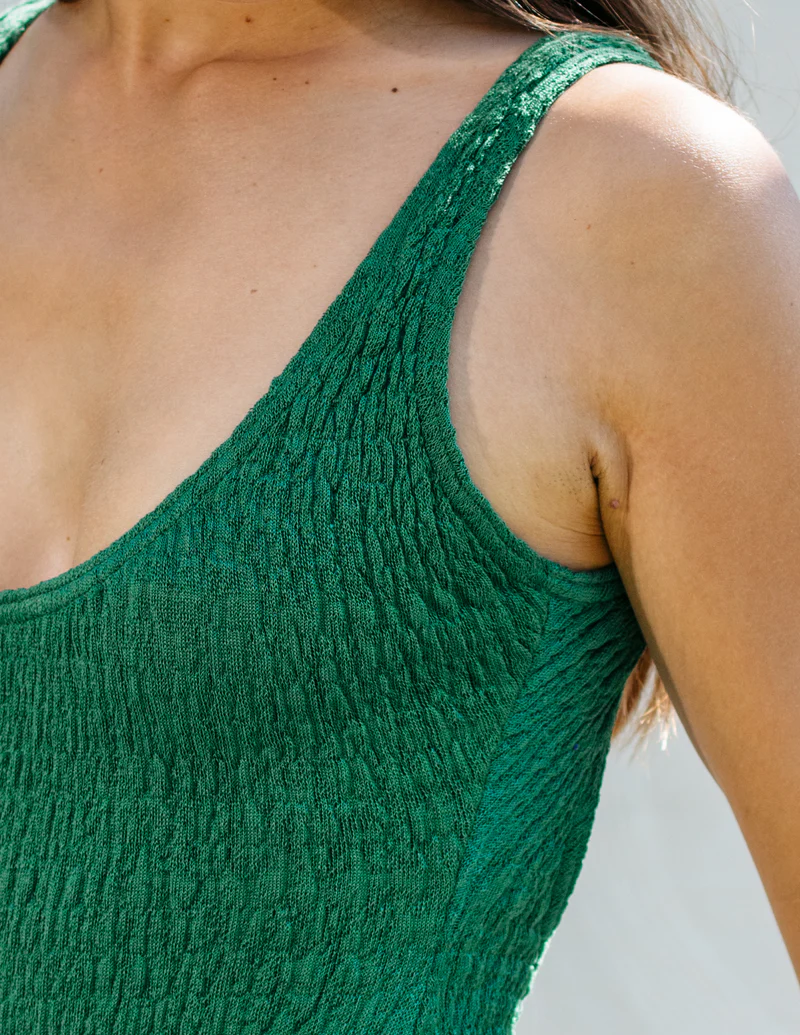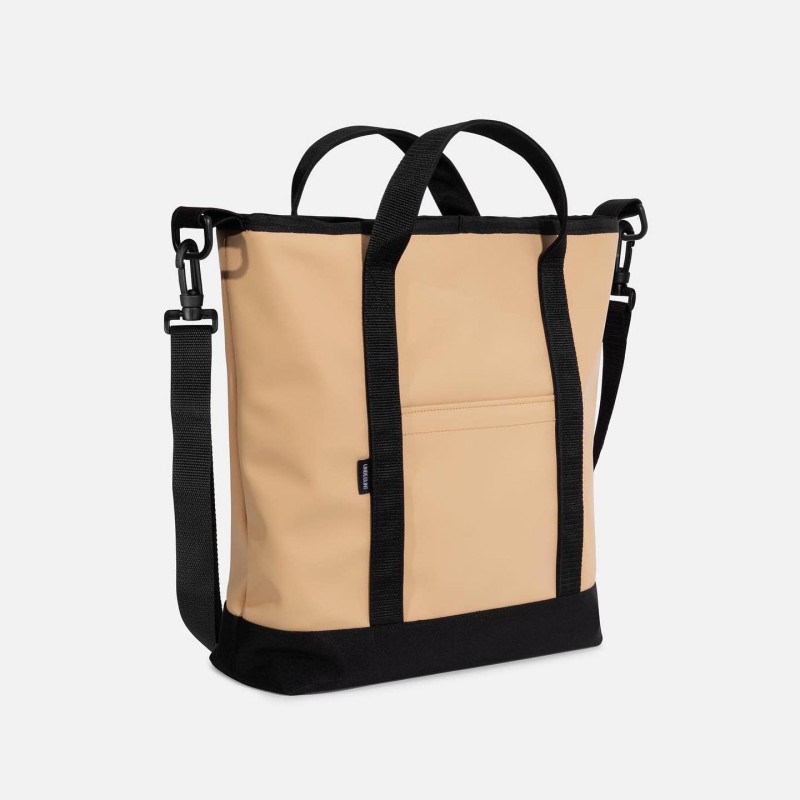What Are the Greenest Swimwear Choices?

Nearly all swimwear is made from synthetic material (you can’t wear a cotton t-shirt in the pool, as it would balloon up and you could drown). Many brands now offer recycled plastic swimwear, but this of course still releases microplastics in the ocean, or when laundered.
So for now, experts recommend simply rinsing and air-drying swimwear after use, or use a microfibre filter, if laundered.
Environmental professor Timo. A Räsänen is not a fan of recycled plastic clothing, saying that plastic bottles should just be recycled into more plastic bottles (recycled plastic is weaker, so fibres degrade quicker, and lead to more plastics leaching into oceans).
A bathing suit made out of recycled plastic doesn’t excite me. It’s not going to solve the plastics problem, until we reduce the plastics we’re making. Chief Policy Officer, Oceana
It’s puzzling when ‘eco-friendly brands’ are like ‘We took old plastic bottles that were choking the turtles, and melted them, to weave you a bikini. S.Jane Kim
Organic Cotton Swimwear

Swim Good offers specially engineered cotton to make swimwear, but it’s not on mass sale. Ethically made in Green, it’s sold in just 2 sizes to mould to your body: Size 1 (XS to S) and Size 2 (M to XL). You can mix and match top and bottom sizes, for the ideal fit.
Dying naturally, there are just three pieces to choose from:
- Saphira: a one-piece swimsuit
- Ophelia: A classic two-piece bikini
- Rhea: A triangular, flattering bikini
Another company makes organic cotton swimwear (using natural dyes). But at $300 a pop, most people won’t be buying it. Some greener brands (but they still use a little elastane) are:
- Isole Vulcani offers organic cotton swimwear for women and girls
- Piuma swimwear (for women and girls) is mostly cotton
- Pure Earth Collection again offers a mostly cotton blend for children (including swimming trunks).
Keeping Skin and Hair Happy in Pools!
Although some pools use greener methods, most swim pools use chlorine bleach to disinfect, which is not just bad for the planet, but strips oils from your hair and skin too.
Rinse your skin and hair in the shower before you jump in pools, and they will soak up less chlorine. A little coconut oil on your hair can protect, as can a silicone swimming caps.
Ensure baby/child swim caps are right size for age, and fit snug but not too tight. Hats and outdoor clothing should be removed, in warmer indoor temperatures (including cars). Read more at The Lullaby Trust.
Rinse your skin and hair after your swim, and use biodegradable soap or shower gel, and a gentle hair conditioner and skin moisturiser.
Where to Recycle Unwanted Swimwear
You can send any brand of unwanted swimwear to Tide + Seek. It’s sent off to recycle into insulation, carpet underlay and sports equipment fillers.
Where to Rent a (slightly greener) Wetsuit
If you go wild swimming or surf the ocean waves, you can rent (or buy) slightly greener wetsuits from Finisterre, has made from Yulex® natural rubber (a better alternative to neoprene that cuts carbon emissions by 80%). It still has some (recycled) synthetic material, but is the best option for now.
Rinse after use (don’t machine-wash or dry clean). After use, you can send back using the prepaid returns label on the bag it came in, and send it back.
Nudist Beaches: You Wouldn’t – Would You?!
Of course the one way to get around not wearing plastic swimwear, is not to wear anything at all! If you own a pool, this is not an issue. But if out in public, nudist beaches have quite a history.
Naturism (where people think it’s best to walk around with no clothes) is a movement that’s been around since the 20s, although England’s first nudist beaches (in Brighton and Hastings) only appeared in the late 70s, met with widespread disapproval.
They are only on shingle beaches (to stop sand getting in nooks and crannies!) It’s also good to wear natural rubber flops, as shingle is not comfortable to walk on, with bare feet.
Nudist beaches usually also have raised banks of pebbles to separate them from normal beaches (and prevent children asking awkward questions). Bathers also have to remain clothed before and after visiting nudist beaches, as to parade around in the nude, would be a public decency offence.
And obviously protect all regions from the sun. Read more on sustainable sun protection (always wash off natural sunscreens before letting pets kiss you, as most contain zinc oxide).






